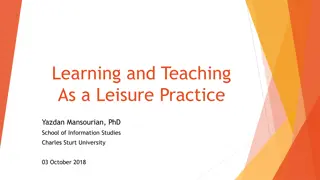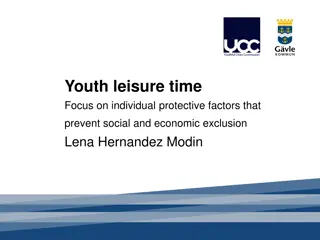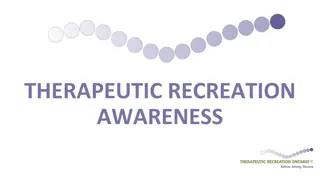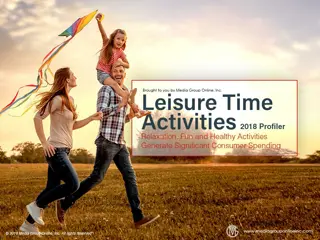Home and Leisure Accident Prevention and Memory Disorders Awareness
Learn about the prevention of home and leisure accidents, memory disorders, and memory loss not part of normal aging. Understand the risks, effects, and necessary safety measures for individuals with memory disorders. Explore ways to anticipate hazards, ensure fire safety, and provide support for those affected by memory-related issues.
Download Presentation

Please find below an Image/Link to download the presentation.
The content on the website is provided AS IS for your information and personal use only. It may not be sold, licensed, or shared on other websites without obtaining consent from the author. Download presentation by click this link. If you encounter any issues during the download, it is possible that the publisher has removed the file from their server.
E N D
Presentation Transcript
Prevention of home and leisure accidents memory disorders and accidents The content is based on the content of home and leisure accident prevention work 1 Home safety coaching
Memory loss is not part of normal ageing always investigate the causes! General information about progressive memory disorders The number of people with a memory disorder in Finland is estimated at 200,000 and is projected to grow strongly in the coming decades. Age is a major risk factor for developing a progressive memory disorder, but there are also around 7,000 people who developed the condition at working age (under 65). Memory disorders are neurological diseases that can affect anyone. 2 Home safety coaching
Memory disorders do not just affect memory. As the disease progresses, there may be changes in the following: Perception, reasoning and problem-solving skills Perception of time and place Mobility and walking Behaviour Memory disorders affect the brain Memory disorders can involve a lack of awareness of the symptoms, meaning that the person does not notice their own symptoms. The symptoms are individual and depend on the type of memory disorder. As a rule, memory disorders progress slowly, but the course of the disease varies from person to person. 3 Home safety coaching
It is important to anticipate hazards and take into account the same risks as for older people in general. Safety devices, such as GPS safety phones, facilitate independent walks and provide a sense of security not only for the person themselves but also for their loved ones. When memory deteriorates It is important to consider in good time who is responsible for safety when the person with a memory disorder is no longer able to manage it themselves. Discussing safety issues with loved ones well in advance will facilitate decision-making at a later stage. People living alone must also be considered. Who will take care of them? 4 Home safety coaching
Memory and fire safety 5 Home safety coaching
Fire safety requires a new kind of attention, in particular to the following: Memory loss can lead to forgetfulness, e.g., the cooker might be left on. The person may also forget what they were doing before; e.g., the phone rings while they are ironing, and they leave the iron on. The use of open fires, such as fireplaces and candles, must be considered according to the person s ability, and the necessary safety equipment must be provided. Memory disorders and fire safety Video on fire safety and memory disorders 6 Home safety coaching
Checking smoke alarms Maintaining electrical equipment Cleaning up dust from behind household appliances Who is responsible? Buying new small electrical appliances with an automatic shut-off feature and practising how to use them Keeping the sauna clean 7 Home safety coaching
Evacuation Evacuating the building during a fire involves many steps, and remembering them requires a lot from anyone in a new situation. 8 Home safety coaching, image: Varsinais-Suomen Muistiyhdistys ry
Falling and memory disorders 9 Home safety coaching
As a memory disorder progresses, the persons body and behaviour change, increasing the risk of falling. Changes in mobility are common because the decline in initiative leads to a decrease in the amount of physical activity in many people with a memory disorder. Physical activity requires encouragement and support from loved ones. Changes in reaction and reasoning skills predispose people to falls and may increase risk-taking. Alertness varies the risk of falling varies. Moving about at night often increases with a memory disorder, increasing the risk of falls. Memory disorders increase the risk of falls 10 Home safety coaching
Prevention is the key to avoiding falls: Identify hazards Ensure sufficient physical activity Acquire mobility aids and support handles. Learn how to use them! Memory disorders and falling There is a post on the blog of Varsinais-Suomen Muistiyhdistys about the falls of people with memory disorders and how to prevent them https://www.muistiturku.fi/fi/blogi/vinkkeja-kaatumisen-ehkaisyyn- tapaturmapaiva 11 Home safety coaching
12 Home safety coaching

 undefined
undefined


































